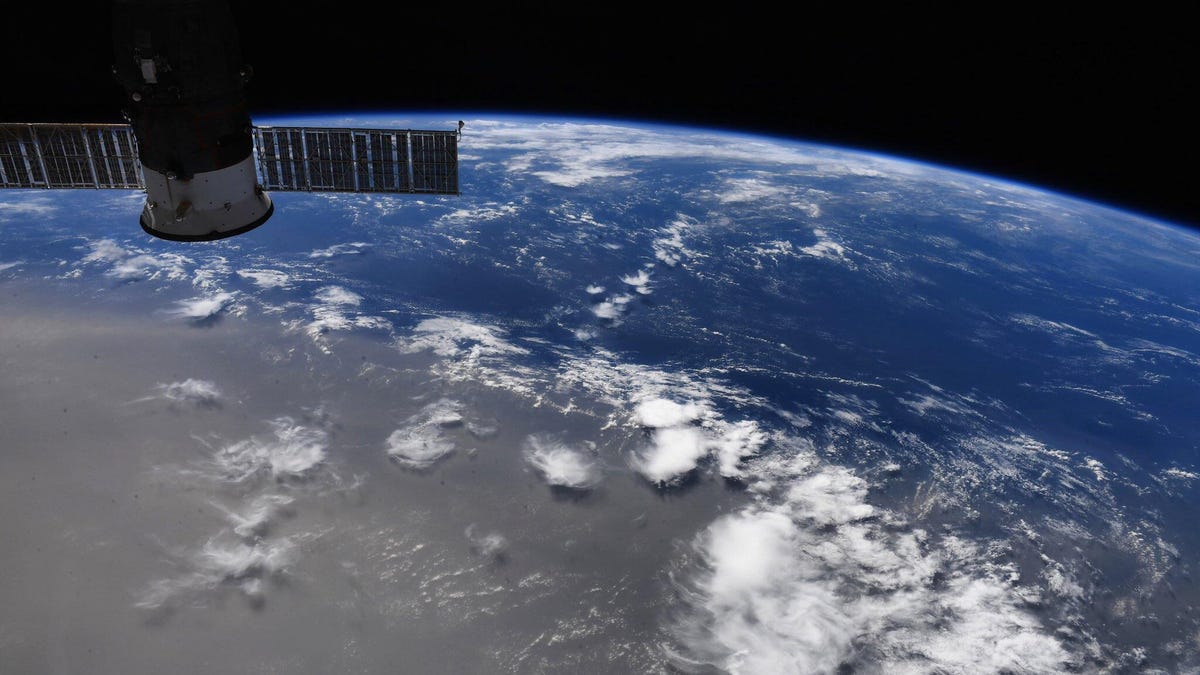Massive Sahara dust plume crosses Atlantic Ocean, could make US skies hazy
Skies are already murky in Puerto Rico and parts of the US may see some intense sunrises and sunsets.
It's not just hurricanes we have to worry about in the Atlantic in 2020. A tremendous dust plume generated by the Sahara desert in northern Africa has crossed the ocean and is impacting Puerto Rico on its way to the US mainland.
NASA astronaut Doug Hurley tweeted an eye-opening view of the plume as seen from the International Space Station on Sunday. "Amazing how large an area it covers!" he wrote.
We flew over this Saharan dust plume today in the west central Atlantic. Amazing how large an area it covers! pic.twitter.com/JVGyo8LAXI
— Col. Doug Hurley (@Astro_Doug) June 21, 2020
Saharan dust plumes aren't unusual, but the size and visible impact of this particular plume makes it stand out. "Every year, winds loft about 800 million metric tons of desert dust from North Africa, by far the planet's largest source of airborne dust particles," NASA's Earth Observatory said in a post on Saturday.
The phenomenon is known as the Saharan Air Layer. The Earth Observatory called the current round of dust an "outbreak." The fine particles are carried westward by strong winds.
The National Weather Service released a forecast showing the dust plume reaching the southeastern US this week. "The dust will be primarily at higher altitudes, so the main impact will be some especially colorful sunrises sunsets," the NWS tweeted.
A computer model forecast of atmospheric dust for the next 10 days. The plume of Saharan dust is expected to move over the Southeastern US next week. The dust will be primarily at higher altitudes, so the main impact will be some especially colorful sunrises sunsets pic.twitter.com/bBzFp06lCu
— NWS Eastern Region (@NWSEastern) June 19, 2020
In the meantime, Puerto Rico is seeing intensely hazy skies. Residents have been sharing images on social media showing the dusty conditions.
SAHARAN DUST 💨
— Kaitlin Wright (@wxkaitlin) June 22, 2020
The top picture was captured on Saturday in Santa Isabel, Puerto Rico. The bottom was taken this morning at 5:45 at the same location!
📸 Janid pic.twitter.com/nsp0JXIDTu
WeatherBug posted some views from its cameras in Puerto Rico.
A dense Saharan Dust layer has reached the central Caribbean, suppressing tropical activity. Our cameras in #PuertoRico show the resulting thick haze: https://t.co/m48kl5bVCM #prwx @NWSSanJuan pic.twitter.com/hWg1A0iwiO
— WeatherBug (@WeatherBug) June 22, 2020
A June 18 view of the outbreak from the National Oceanic and Atmospheric Administration (NOAA) Dscovr satellite puts the size of the plume into a global perspective. It's big.
The Saharan dust plume as seen by the NOAA Dscovr satellite on June 18, 2020.
The dust might be a nuisance at the moment, but there are silver linings. NASA said it "plays an important ecological role, such as fertilizing soils in the Amazon and building beaches in the Caribbean."
The Saharan Air Layer also has the side effect of suppressing the formation of hurricanes. That's a small bit of good news considering that NOAA is expecting a busy Atlantic hurricane season this year.


